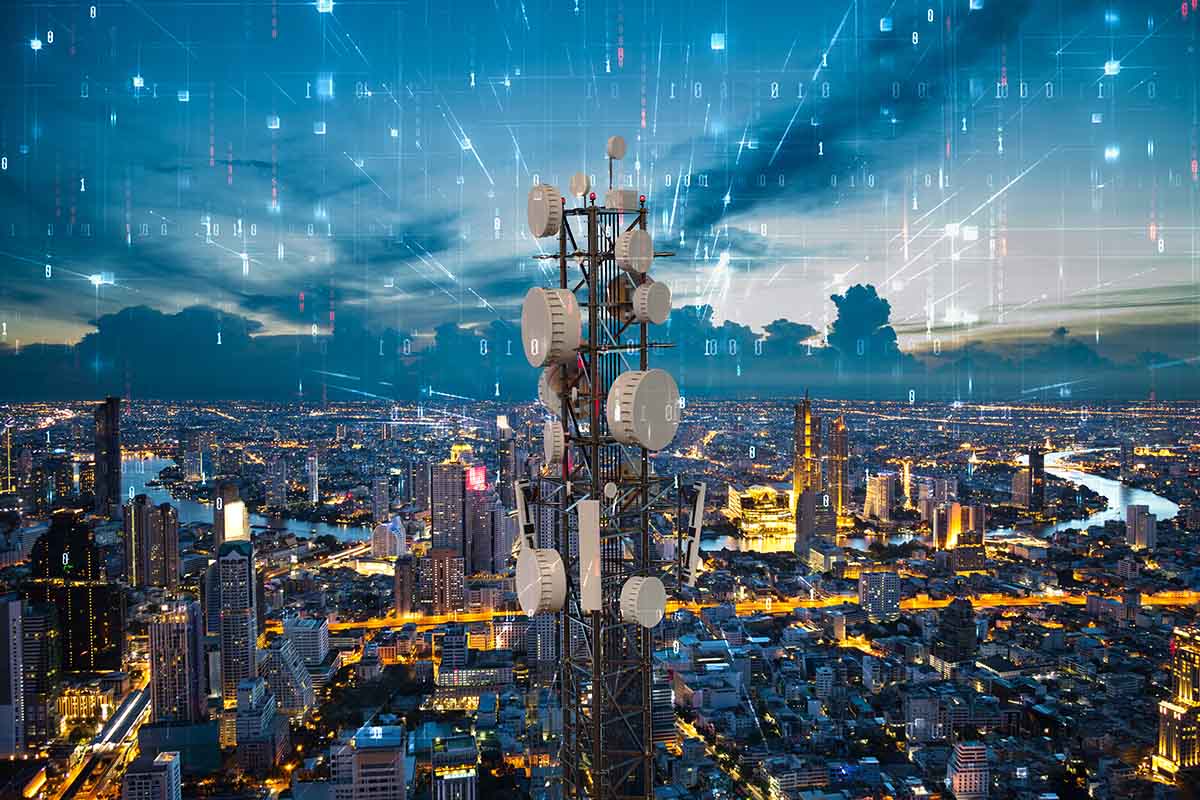Wireless Networking and WAN in a Nutshell
Simply put, wireless networking is the technology that enables devices to communicate and exchange data. It utilizes wireless communication methods to establish connections between devices. WAN stands for wide area network and refers to the relationships between your devices and data centers, office, and cloud storage. The term “wide area” is used because your network is expanding across multiple points and locations.
Wide area networks have a large variety of applications, with everything from connecting cities to entire countries with one another. In fact, the internet itself can be thought of as one very large WAN! 6G, 5G, and LTE wireless networking have transformed our world, streamlining the ways we learn new information and communicate with each other. We use it constantly in our day-to-day lives and don’t even always stop to think about all of the different ways we rely on it.
One thing is for sure, however. When our wireless networks aren’t working properly, we notice right away! Since we use WAN everywhere, from at home to public spaces and at work, downtimes can quickly lead to fairly large interruptions. Thus, having a secure and reliable network is crucial.
Top Emerging Technology Trends in Wireless Networking
Like any technology, wireless networking constantly evolves as new capabilities are developed. Its power has the potential to transform how many different industries operate. Let’s take a look at some of the newest emerging technology trends in wireless networking in some of the top industries:
EMS and Fire
As AI-driven technology trends become more and more prevalent, many public safety entity companies are turning to automated dispatching systems. These can be especially useful for mitigating the effects of staff shortages, a growing concern for this industry. However, this crucial technology for communication and operations can’t run without reliable and expansive WAN services.
Besides dispatching, EMS and fire require wireless networking capabilities for their vehicles to power vital technology like digital cardiac monitors, transport patient vitals to hospitals while en route, or chart important patient data on Toughbooks or tablets. Since these tasks often involve working with sensitive patient information and require HIPAA compliance, having a secure network to work on is non-negotiable in this industry.
Healthcare
Healthcare is another industry where wireless networking is helping accomplish some exciting changes. Within healthcare, clinicians and workers need to be in constant communication with each other to accomplish positive patient outcomes. Emergency rooms need to be able to communicate with incoming ambulances; pharmacies need to send information to healthcare offices, doctors must be able to view patient records, and so on.
When an outage occurs in one of these situations, the results can be devastating since communications are now crippled. This can even affect patient outcomes. Reliable networks are necessary in healthcare scenarios and can power new technologies like HIPAA compliance programs.
Data breaches and hacking are a constant concern in healthcare, and organizations need to take steady steps to prevent them by utilizing digital solutions. WAN helps power these kinds of software, ensuring patient data and information stay secure and compliant.
Education
However, public safety and healthcare aren’t the only industries that can benefit from wireless networking and other technology trends. The world of education constantly utilizes WAN services, especially institutions like college campuses and K-12 schools. SD-WAN (software-defined) is especially useful for schools since it allows workers to easily manage infrastructure and learning applications directly via the cloud.
State testing is also increasingly being administered from the cloud, which can present bandwidth problems if a school’s network doesn’t have the capabilities to handle the SaaS (software as a service) applications that are being used. SD-WAN solves this issue by enabling dynamic bandwidth control for network administrators in education.
Retail
Much like AI, wireless networking technology is also beneficial for the retail industry. WAN can help provide enhanced customer service experiences as well as the necessary infrastructure for stores. It also aids in maintaining compliance and preventing security breaches.
Today, AI-powered WAN solutions are revolutionizing the way retail is conducted by reducing the need for manual services and expensive technology overhauls. This can lead to significant cost and labor savings for retailers, as they’re able to automate more of their operations.
Restaurants
Restaurants heavily rely on wireless networking services to operate, including in many ways that you may not realize! As pop-up shops and self-ordering services gain traction and become more and more popular, having a network that workers can rely on is crucial. Besides just menus and ordering, 5 G networks can also help restaurants control key components of their operation, like digital signage and IoT (Internet of Things) sensors.
Reliable internet is also essential for operating POS (point of sale) devices. Without a POS system, a restaurant may not even be able to operate and may need to close its doors, leading to lost revenue and hours for staff.
Financial Services
The financial services industry is another context where wireless networking is vital to day-to-day operations. WANs allow for synergy between credit unions and community banks, which use these networks to transmit customer data and communicate internally. WAN can also do a great deal to boost banking security and network agility.
Besides internal networking, WAN solutions can also help power the customer-facing aspects of financial institutions. Digital banking solutions are more popular than ever, and SD-WAN can help power them, thanks to the monitoring and cloud services it enables.




















